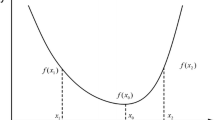Abstract
Based on the car front-wheel-hub forging forming process of numerical simulation, the temperature gradient expression of forging model cavity near the surface layer was got ten, which illustrates that the forging temperature gradient is related to forging die materials thermal conductivity, specific heat and impact speed, and the correlation coefficient is 0.97. Under the different thermal conductivity, heat capacity and forging speed, the temperature gradient was compared with each other. The paper obtained the relevant laws, which illustrates the temperature gradient relates to these three parameters in a sequence of thermal conductivity > impact speed> specific heat capacity. To reduce thermal stress in the near-surface layer of hot forging cavity, the material with greater thermal conductivity coefficient and specific heat capacity should be used.
Similar content being viewed by others
References
Yang Hui, Wang Huachang, Zou Jun. Forging Die Finite Element Analysis on Integrated Relationship between Stress and Elastic Modulus [J]. Journal of Forging Technology, 2005, (4): 105–109
Song Fujin, Song Huachang, Hao Jin. Temperature Field Simulation on Cars Hub Closed Forging Die [J]. Thermal Processing Technology, 2008, (21):74–76
Zhao Yiping. Research on Improving the Service Life of Hot Forging Dies in the Production [J]. Journal of Forging Technology, 2000 (6):43–47
Kim DH, Lee HC, Kim BM, Kim KH. Estimation of Die Service Llife Against Plastic Deformation and Wear During Hot Forging Processes [J]. Journal of Materials Processing Technology, 2005, 166(3): 372–380
Guo Lifu, Liang Loulu, Rang Zhou. The Heat Load Analysis of Typical Forging Dies [J]. Heavy Machinery, 2000, (3):47–49
ABACHI Siamak.Wear Analysis of Hot Forging Dies [D]. Turkey: Middle East Technical University Department of Mechanical Engineering, 2004
Guo Lifu. Thermocouple Development and Manufacture and Forging Die Heat Load and Thermal Fatigue [D]. Xi’an: Northwestern University, 1994
Author information
Authors and Affiliations
Corresponding author
Additional information
Funded by the Fundamental Research Funds for the Central University (No.2010-II-025) and the National Natural Science Foundation of China(No.50675165)
Rights and permissions
About this article
Cite this article
Wang, H., Wang, G., Xiao, H. et al. Hot-forging die cavity surface layer temperature gradient distribution and determinant. J. Wuhan Univ. Technol.-Mat. Sci. Edit. 26, 801–806 (2011). https://doi.org/10.1007/s11595-011-0314-1
Received:
Accepted:
Published:
Issue Date:
DOI: https://doi.org/10.1007/s11595-011-0314-1




